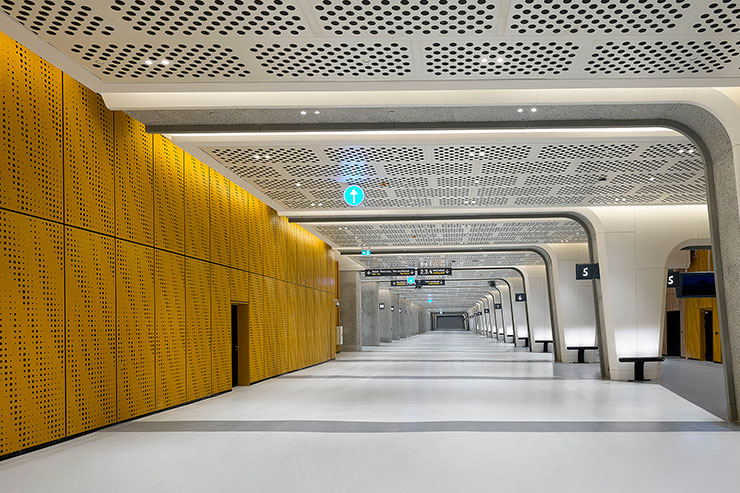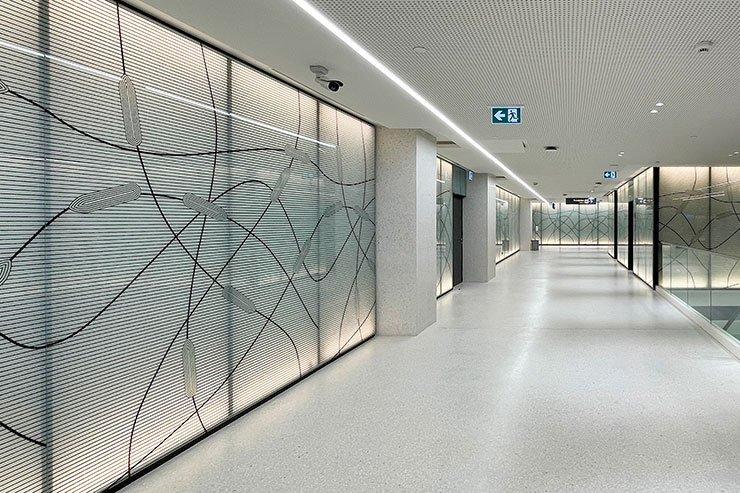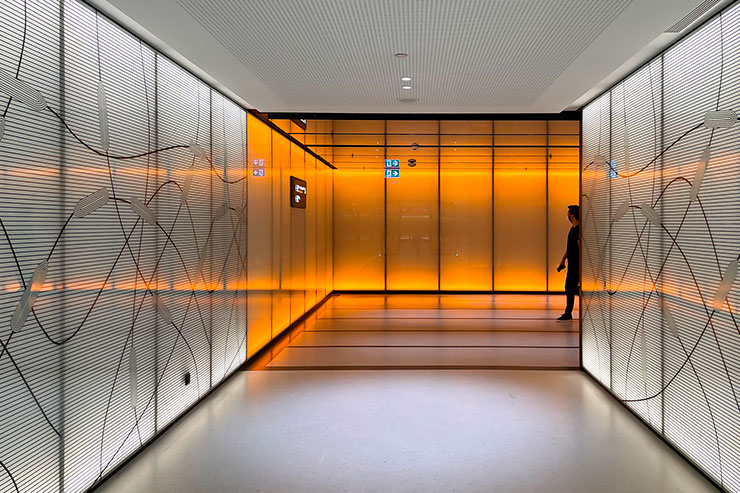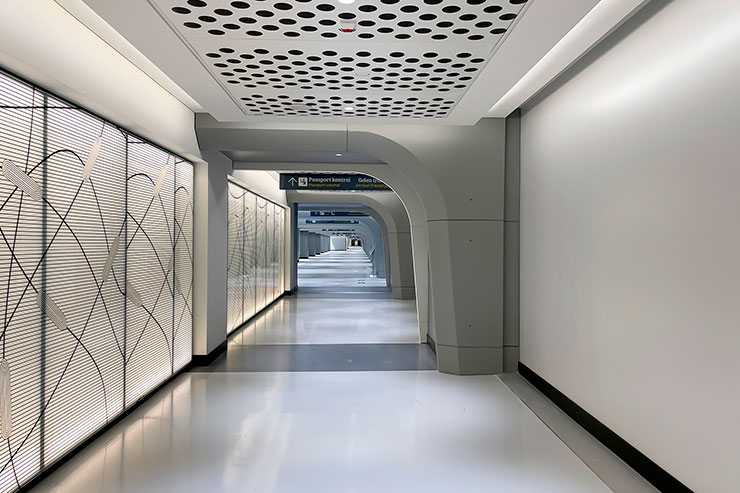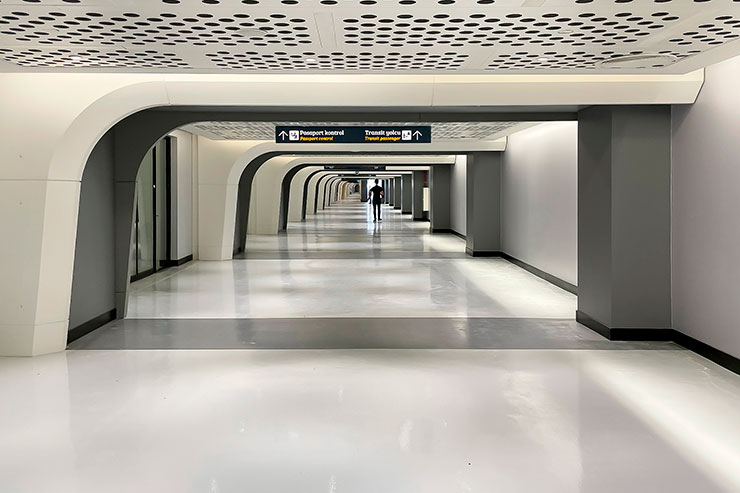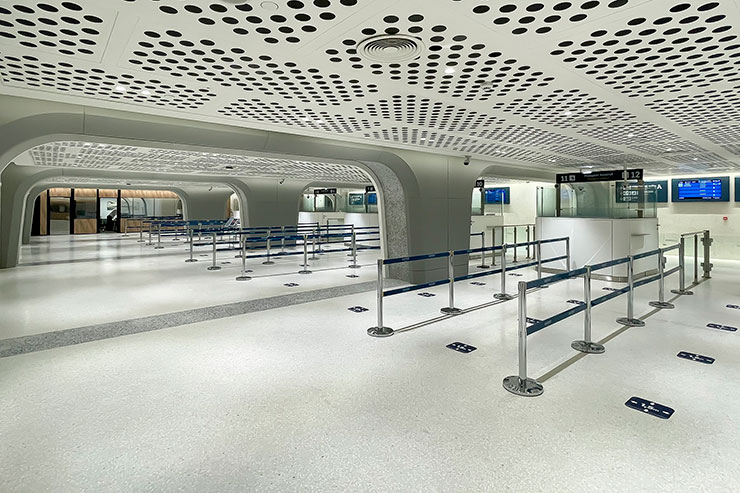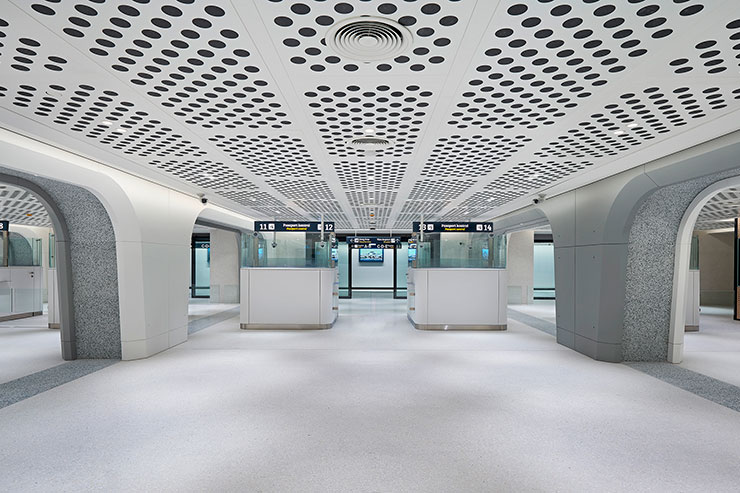- ABOUT
- JUDGING
- CONTACT
- MORE
- 2024 Entries
- Installations 2024
- Past Winners
- Subscribe
- [d]arc directory
- arc magazine
- darc magazine
Galataport Istanbul Cruise Terminal, Turkey
ProjectGalataport Istanbul Cruise TerminalLocationIstanbul, TurkeyLighting DesignPlanlux Lighting Design, TurkeyInterior DesignAutoban, TurkeyClientGalataport İstanbul Liman İşletmeciliği ve Yatırımları A.Ş., Doğuş Holding, Bilgili HoldingLighting SuppliersAvolux, Arlight, Osram GMBH, Lamp83, HelvarPhotographyAli Bekman, Korhan Şişman
Galataport Cruise Terminal is a unique project that plans to increase the operational capacity by taking the cruise operations underground and offering ground level to integrate it into the city. It is the first underground cruise terminal globally, so it has its characteristics. The port has extended docking for three ships simultaneously and has the infrastructure capacity to host 15,000 daily passengers.
Passengers disembarking from the ships moored in the port reach the underground terminal from the particular ramp areas and complete the necessary procedures for their embarkation or transit journeys.
A temporary bonded area is created with a unique cover system separating the bonded zone and the security area when no ships are in the port. The same cover system separates the coastline and the quay area when the ship docks. The coastline remains open to access.
International terminals are the first places that host guests and the areas that send the last passengers. The values these places represent and the message they pass are critical. It is precious to create the first place experience for passengers who enter Istanbul by watching the Historical Peninsula. The most beautiful aspect of Istanbul is undoubtedly the sparkle that the Bosphorus, which passes through the middle of both sides, adds to the city. Thanks to this spacious area, you can feel that you are breathing. The aim is to feel the same peace and comfort when coming to and leaving Istanbul.
Numerous porticoes in the terminal have to carry above-ground functions. The regional cistern structure inspires the interior design, which creatively transforms these cloisters into the natural element of the space. The curved forms and textures created with mastery in interior design support the fluency and naturalness of artificial light. Thus, light becomes an indispensable part of the place’s general character, providing us the primary basis for developing and managing the lighting strategy.
In addition to changing scales, sections, colors, and textures, planned lighting contributes a significant role in the comfort of these spaces. We also focused on sustainability, security, and identity criteria when designing light.
All spaces are underground but need to be evaluated in terms of their environmental views from inside, such as ticketing, passport areas, and outside vehicle circulation, bus stops, boarding-and-departure areas even they are inside, too. With this aspect, the project is very interesting.
We have carried out meticulous, comprehensive, and collective studies on the detailed solutions necessary for the healthy implementation of the interior architecture, aiming to provide continuity with light to the transparent transitions between spatial stories. The atmosphere created with light is as important as the operational requirements; the lack of daylight was a crucial ergonomic parameter to care. Ceiling sections refer to natural light openings at many points with the support of grazers to strengthen the sense of direction. Lighting systems accompanying the changing levels and masses support orientation and flow in the transition spaces that connect the main areas and have relatively faster guest traffic. Also, it is possible to adjust light intensity and balance between the zones to establish the closest relationship to natural light changes at different times of the day with the help of a complicated DALI-based lighting control system. In this process, we worked according to energy efficiency targets without compromising visual and functional comfort.

